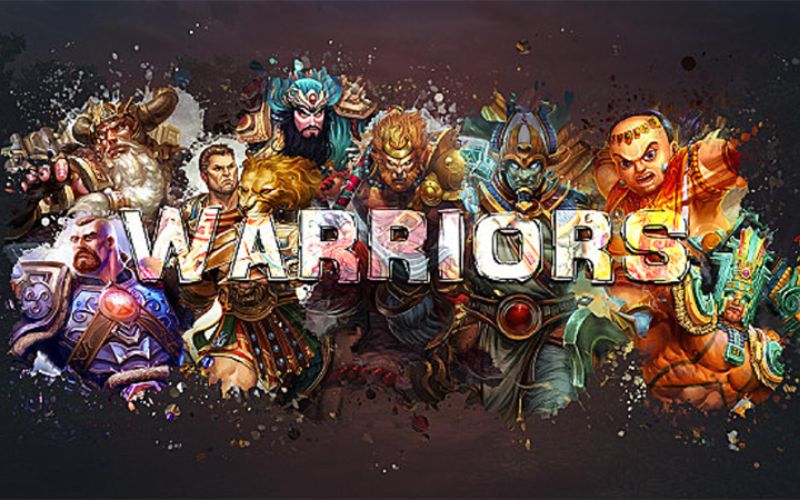
Smite is a popular multiplayer online battle arena (MOBA) game developed by Hi-Rez Studios. Since its release in 2014, this unique title has gained a significant following due to its engaging gameplay that blends third-person action with traditional MOBA elements. Players enter the battlefield as gods and deities from various mythologies, each with their own distinct abilities, playstyle, and strategic role. In this blog post, we will delve into the intricate world of Smite, exploring its gameplay mechanics, character diversity, community dynamics, and overall impact on the gaming landscape.
The Unique Gameplay Mechanics of Smite
Unlike many other MOBAs that use a top-down perspective, Smite employs a thrilling third-person viewpoint that offers players a more immersive experience. This distinctive design influences not only how the game is played but also how players understand strategy and teamwork within its realm.
The Third-Person Perspective
The third-person perspective in Smite dramatically alters the player experience compared to traditional MOBAs.
In most games of this genre, players view the action from above, giving them a comprehensive understanding of the battlefield. However, in Smite, the close-up, over-the-shoulder camera allows for more direct engagement with the game’s environment. Players must be adept at positioning, dodging, and aiming, making reflexes and spatial awareness critical components of success.
This perspective enriches the gameplay by adding an extra layer of excitement and intensity. When you are actively controlling a god, it feels less like a strategy board game and more like a fast-paced action game. Players can dive headfirst into battles, executing skill shots and weaving through enemies with precise movements.
Additionally, this design fosters a greater sense of immersion. Players are not just managing resources or sending minions into combat; they are physically present in the arena, launching attacks and evading danger. The adrenaline rush from landing a well-timed ability or escaping with only a sliver of health adds an exhilarating facet to the experience that keeps players coming back.
God Selection and Roles
At the heart of Smite lies its diverse roster of gods, which represents various mythologies spanning many cultures. This extensive selection serves as a foundation for the game’s depth and replayability.
Each god comes with their unique set of abilities and roles, generally categorized into classes such as Guardians, Warriors, Assassins, Mages, and Hunters. Understanding these roles is crucial for effective team composition during matches.
For example, Guardians excel in tanking damage and protecting teammates, while Assassins deal high burst damage to eliminate key targets quickly. Mages often provide powerful area-of-effect spells, while Hunters typically focus on consistent ranged damage output. The balance between these roles creates dynamic interactions, emphasizing the importance of teamwork and strategy.
Moreover, the choice of gods is not just about their abilities; it reflects players’ preferred playstyles and strategies. Some may prefer diving into the fray as an aggressive Assassin, while others may enjoy supporting their team as a Guardian. This customization aspect allows for personal expression and can significantly influence a player’s overall performance and enjoyment of the game.
Itemization and Builds
In addition to the unique characters, Smite also incorporates a robust item system that further complicates gameplay and strategy. Each match, players have the opportunity to purchase items from a shop to enhance their characters’ abilities and attributes.
Understanding itemization is essential for maximizing effectiveness in combat. Players must evaluate their opponent’s strengths and weaknesses, adapting their builds accordingly. For instance, if facing heavy physical damage, investing in armor items can help mitigate damage and keep your character alive longer.
Building an optimal loadout often requires a deep understanding of both characters and items. Some items might synergize beautifully with specific gods, enhancing their skills and providing devastating results. This level of customization leads to countless build possibilities, enabling players to tailor their strategy to individual preferences and match conditions.
Furthermore, experimenting with different builds can lead to exciting discoveries. Players may stumble upon unconventional item choices that prove surprisingly effective, encouraging creativity and innovation among the community.
Exploring the Rich Lore and Characters of Smite
One of the standout features of Smite is its rich narrative tapestry woven through its character designs and lore. The game does not merely present gods as playable entities; instead, it embraces their myths, histories, and cultural significance, infusing each character with depth that resonates with players.
Mythological Foundations
Smite draws its character roster from a wealth of mythologies across the globe, including Greek, Egyptian, Norse, Hindu, Chinese, and many others. This variety not only brings authenticity but also celebrates the richness of human culture.
Each god’s story is deeply rooted in their respective mythos, allowing players to explore fascinating tales as they engage in competitive gameplay. The inclusion of these deities engages players on a deeper level and invites them to learn about ancient beliefs and legends, often sparking curiosity about the original stories behind these sanctified figures.
Characters like Zeus or Odin come with their own illustrious backstories that players encounter while mastering their skills in-game. This connection between gameplay and mythology enhances the immersion, making each victory feel like a triumph in a grand narrative rather than merely fulfilling game objectives.
Moreover, the development team regularly introduces new gods, expanding the lore continuously. New content keeps the game fresh and encourages players to delve into the mythology surrounding newly released characters, deepening their appreciation for the diverse inspirations behind Smite.
Character Design and Abilities
Beyond their mythological roots, the character design in Smite is striking and diverse, reflecting the personalities, strengths, and themes associated with each deity. The developers pay meticulous attention to detail, ensuring that each character embodies their lore through unique visuals, voice lines, and animations.
For example, characters like Kali exude an aura of ferocity and elegance, which is visually evident in her intricate design and graceful movements. Her abilities replicate the essence of her mythos as the goddess of destruction, echoing both power and beauty in their execution.
In contrast, characters like Ra, the sun god, illuminate the battlefield, bringing light and warmth to allies while incinerating foes. His abilities reflect his solar nature, reminiscent of blazing sunlight with graphics that convey a powerful visual impact.
Furthermore, every character boasts a unique set of abilities that continues to evolve as the game progresses. This dynamic gameplay reinforces the idea that no two gods are alike, and each encounter brings new surprises, keeping players engaged and invested.
Community Engagement and Player Connection
The rich lore and character design lay the groundwork for meaningful community engagement within Smite. Players often form connections with certain gods based on their narratives, abilities, and aesthetics. This emotional investment drives discussions, fan art, and content creation around the game.
Many players become advocates for their favorite gods, sharing insights on forums or social media platforms. They create fan-made content that discusses strategies, offers lore breakdowns, or showcases impressive gameplay highlights. This sense of community cultivates camaraderie, allowing players to bond over shared experiences and interests.
In addition to fostering relationships between players, the developers actively engage with the community through events like “God Reveals” where they unveil upcoming characters and share lore snippets. These initiatives enhance anticipation and interest within the community, breeding excitement for new updates.





